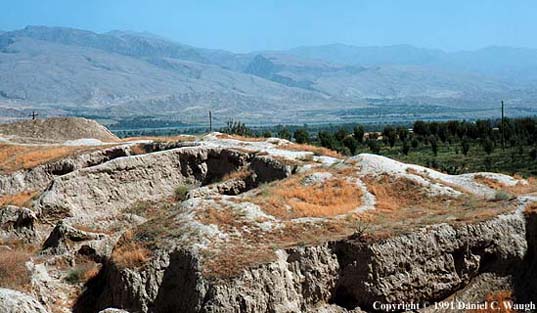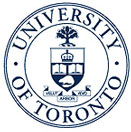![]()
Tajikistan was situated on the meeting point of the East and West and the ancient Silk Route where the great civilizations of tie East and West made contact and carried on cultural exchange.
In the late 3rd millenium BC traces of the Indo-European language were discovered in Central Asia. The first recorded history began in 600 BC when the Achaemenid Empire of Iran held three satrapies of Sogdiana, Saka and Khorezm. In 328 BC Alexander invaded Marakanda (Samarkand) and married the Bactrian Princess Roxana. In 1st century BC the Kushan Dynasty controlled Sogdiana, northern Afghanistan and India. By the 3rd century Soqainna came under the Sassanid Empire of Iran. In the 8th century The Arab armies controlled Central Asia.
By 9th century Transoxiana was ruled by the Persian speaking Samanid Dynasty, which revived the Persian language. Under the Samanids scientists and scholars such as Avicenna and AI-Biruni and poets such as Ferdowsi and Rudaki were nurtured and Tajikistan became one of the main centres of culture in the world.
From 10th century the Turkic Ghaznavids ruled the area until the mid 11 century when the Seljugs look over and ruled over a vast empire. Their rule lasted a century until the Khorazmshas became the rulers of all Transoxiana and much of the Muslim World.
In the 13th century Khorazmshahs became the victim of Gengnis Khan and his army, who sacked Khojand, Bukhara, Samarkand, Merv and Termez among others. After Genghis’s death his empire was split among his sons, today’s Tajikistan was in the Muslim Chaghatai Khanate. In the 14th century Tamarlane rose from Samarkand rampaged and conquered the whole area and made Samarkand his capital.
In the 15th century Samarkand was governed by Timur’s scholarly grandson Ulughbek gifted in mathematics and astronomy, who built an observatory which attracted scientists to the city.
Uzbeks descend from the Moguls and in 14th century they converted to Islam and moved to Syr Darya, The Shaybanid Dynasty ruled until the end of 16 century. The Astrakhanid khans and Iranian Safavids held sway over the area until mid-18 century. In 1747 after the collapse of Nadir Shah’s regime, the. three Uzbek khanates of Kokand Khiva and Emirate of Bukhara took over.
From 1868 to 1895 Tzarist Russia gained control of them. After the Russian Revolution in 1917 Tajikistan was brought under Bolshevik control. Absorbed in 1918 by the Turkestan Republic, the Tajik Autonomous Republic was created in 1924 within Uzbek SSR, in 1929 Tajikistan was raised to the status of a full republic.
Since 1940s Regionalism (Mahalgarai) started divided the nation into 2 groups; the North centering around Khojand receiving all the investment became urbanized and wealthy and supplied most of the country’s rulers and the South including, Badakhshan, Gharm, Hissar and Khurghan remained mostly rural and underdeveloped. These policies destroyed the unity of the country and created divisions within the Tajik nation which still make themselves felt these days.
In l991 following the failed coup in Moscow, Tajikistan changed its president: Kakhar Makhkamov who had supported the coup and proclaimed itself an independent republic. In the elections which followed it the Communist Party candidate Rakhman Nabiev, who had been the president of the Communist party faced the candidate of the united opposition; Dovlat Knodanazarov a renown cinematographer, Chairman of the USSR Filmmakers’s Union, a reformist deputy at the Congress of the People’s Deputies and the Supreme Soviet. Rahman Nabiev was installed into power. This brought about a bloody civil war.
Immamali Rahmonov a leader from Kuliab was elected at an extraordinary session of the parliament and.sworn, in as President of Tajikistan.
The civil war chimed 50,000 lives destroyed 20,000 houses, mostly of the opposition and made over a million refugees.
![]()
The smallest of Central Asian Republics, and the most deprived Tajikistan is bordered on the north by Uzbekistan and Kyrgyzstan, on the east by China, on the south by Afghanistan and on the west by Uzbakistan. The territory is 93% mountainous and almost half of the republic Iies at an elevation of 3,000m. Its eastern part includes the Pamirs the bulk of the high Pamir Plateau, including Communism Peak (7,498m; which is the highest summit in the CIS. Only about 7% of the republic’s land is arable. The major rivers are the Syr-Darya which flows through the Ferghaneh Valley, the Zeravshan located in the north east and Kafirnigan, Vakhsh and Pyandzh tributaries of the Amu Darya.
The climate is extremely varied with maximums reaching 48c in summer and -63c in winter. Wildlife is extremely varied and includes the endangered snow leopard and mountain goats and sheep including the Marco Polo Sheep, the Siberian horned qoat and the rare markhor, The country is divided into 3 provinces; Gorno Badakhshan, Khodjand (Leninabad) and Khatian. The capital is Dushanbe.
![]()
Tajikistan has a population of 6,5 million with 33% living in urban and 67% in rural areas and a density of 37 person per sg km. Tajikistan has the highest rate of population growth in CIS and in the top place for mortality of children. The overall ethnic distribution is 62% Tajik 23% Uzbek 8% Russian 1.4% Tatar and 1.3% Kyrgyz.
![]()
The indigenous population is mostly Muslim of the Hanafi Sect, In Badakhshan they are Ismaili (Shia) and followers of the Agha Khan.
![]()
Tajik which is almost identical to Persian (Farsi) was written in Arabic/Farsi Script until 1930 when if was replaced with Latin which was turn abolished in favour of the Cyrillic script in 1940. After the independence in 1991, attempts have been made to reintroduce the Arabic/Farsi script. In addition a number of ancient languages including Pamiri, Shoghnani and Yazghaolami, Rushani, Oroshori, Vakhi, Ishkashimi, Munjani are still being spoken.
![]()
Tajikistan’s economy is dependent on a large agricultural sector which accounts for almost 40% of its Net National Product. Tajikistan way, Soviet Union’s chief producer of cotton while 70% of the country’s food and fuel were brought in from Russia, Ukraine and Kazakestan. In fact 90% of Gorno Badakhshan’s food and fuel needs were brought from Soviet Union while Badakhshan, rich in raw materials, was used as a research centre.
With the dismantling of the Soviet Union and their fundamentally interdependent economies, Tajikistan is finding it difficult to sell its only cash crop, cotton in the world market and survive economically. The fall in the world price of cotton, 40% forecasted for 1997 leaves Tajikistan even more seriously short of foreign exchange.
Mineral resources in the country include coal, gold, iron, lead, natural gas, oil, ore, silver and zinc located mostly in inaccessible areas.
Tajikistan is a large producer of hydroelectric energy, some of which supports a domestic aluminum industry. The fall in the world price of aluminum means that insufficient hard currency is earned to pay for the needed import.
According to the data on per capita output and GDP Tajikistan is in the 2nd place of the CIS Republics.
The civil war that began in 1992 cost billions of roubles and considerable economic disruption. The majority of the skilled specialists left and the economy came to a virtual stand still.
In Tajikistan no state employee has been paid since 1992, with no privatization to date, the Tajik government is virtually the country’s sole employer. Anybody still receiving a salary is often supporting up 30 relatives and friends.
An adult Tajik is paid 70 Tajik samani per month which is worth almost US $25.
As a comparison, here are the costs of some basic foodstuffs in Tajikistan:
| Item | Cost (Roubles) | |
| A loaf of bread | 25dirams | |
| A liter of cow’s milk | 1,70 dirams | |
| A kilo of cubed sugar | 1,60 dirams | |
| A kilo of rice | 3 samsni | |
| A kilo of pulses and cereals | 1-2 samoni | |
| A kilo of cotton oil | 6 samoni | |
| A kilo of beef | 7 samoni | |
| A kilo of lamb | 8 samoni | |
| A kilo of butter | 10 samoni | |
| A kilo of chicken | 6-7 samoni | |
| A kilo of tea | 10-15 samoni |
Tajikistan is a country with vast natural and human resources, but as things stand at the moment it is unable to make effective use of them.
By Parvonakhon Jamshedov


